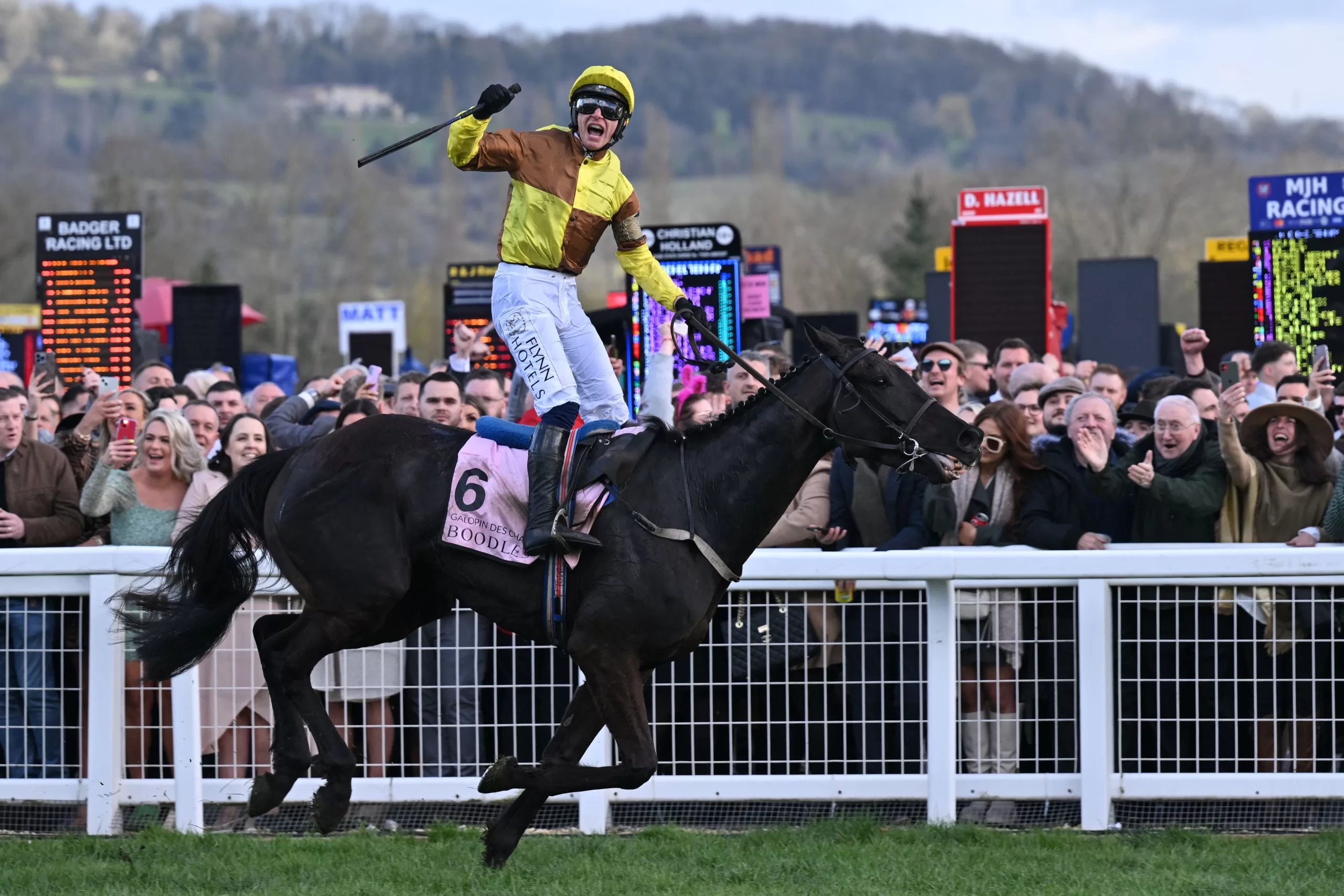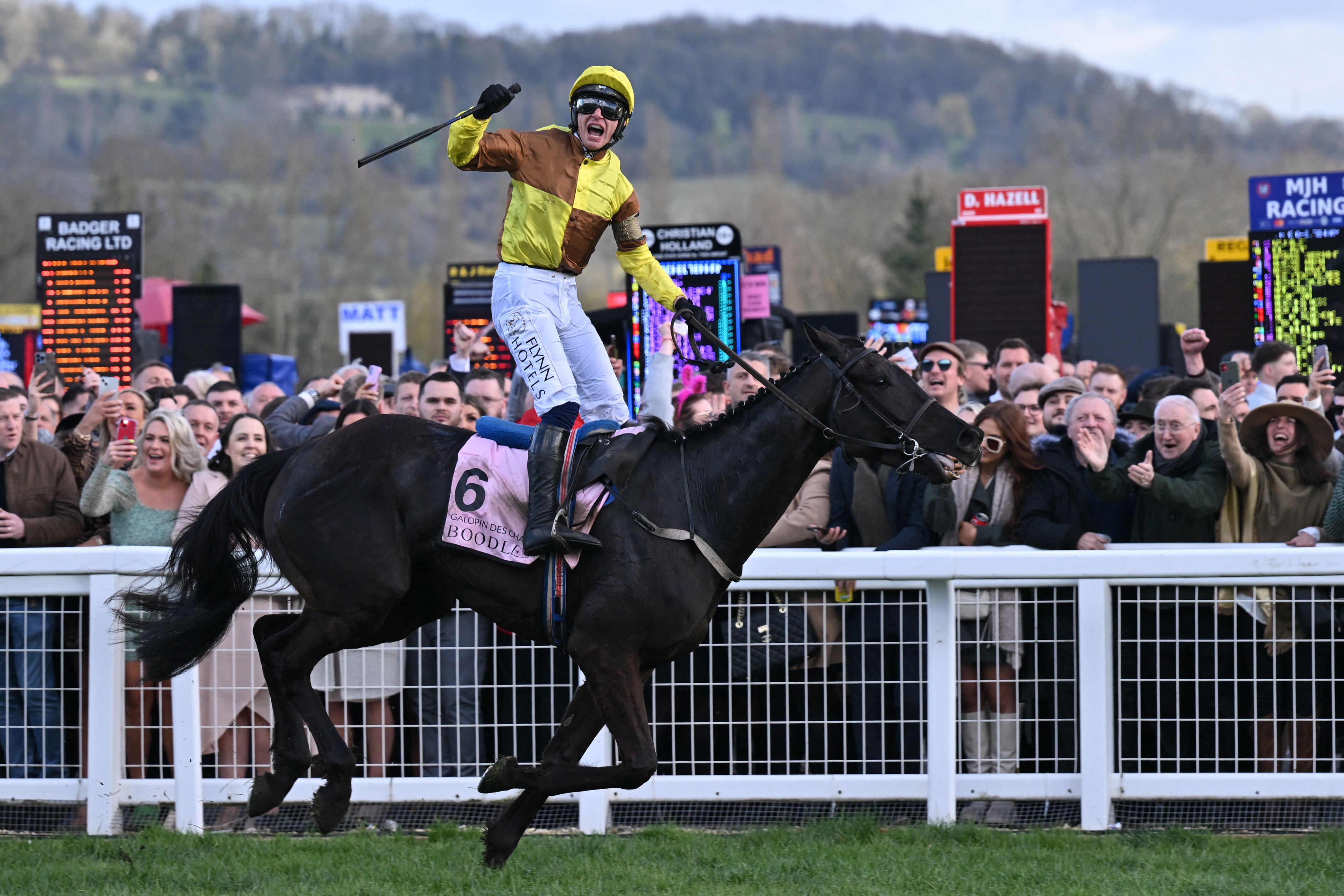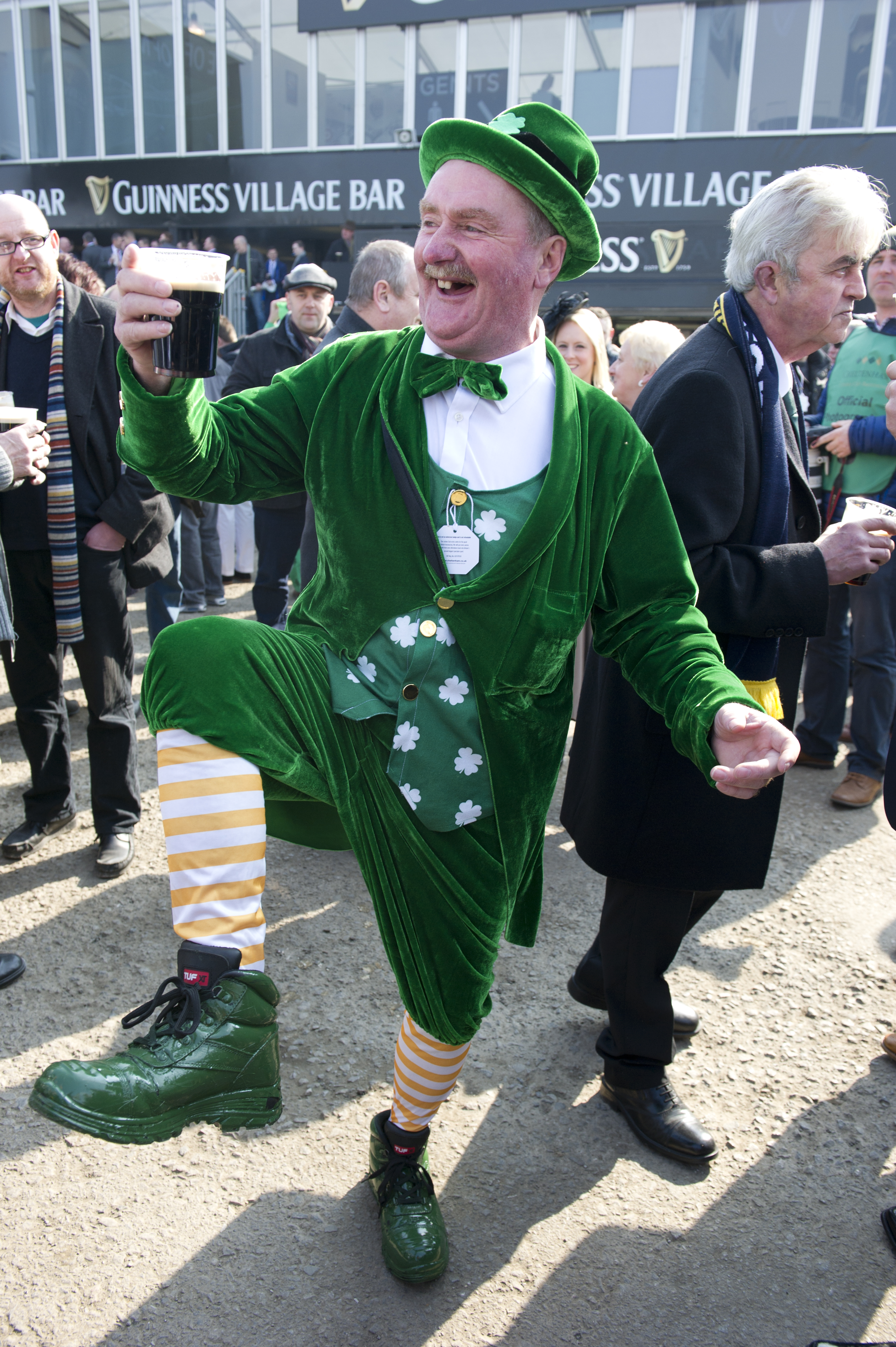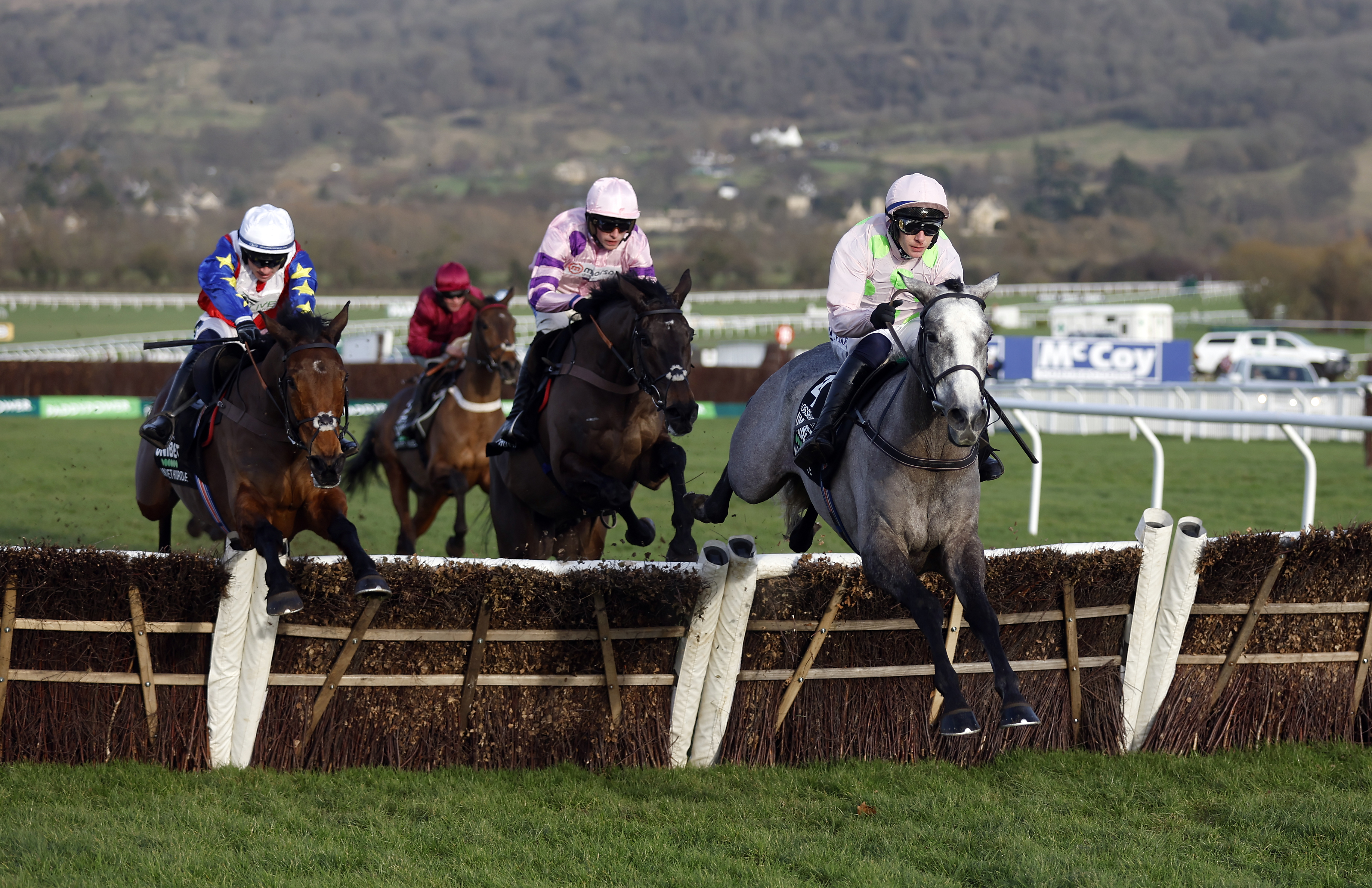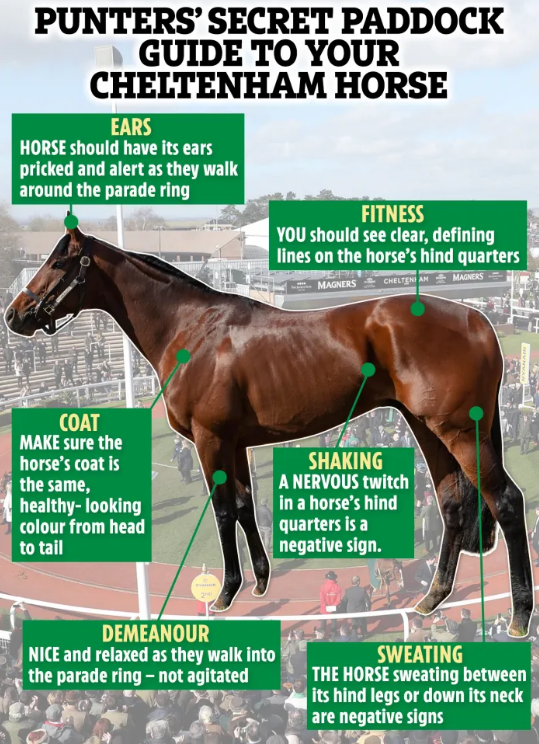If that’s you then welcome!
Many of the terms in racing can be confusing — even for people who have been watching it for years.
CHELTENHAM BETTING OFFERS – BEST FREE BET DEALS FOR THE FESTIVAL
Here are some of the key ones…
CHELTENHAM FESTIVAL
First run in 1860, the Festival has grown to become the biggest four days of the jumps season.
It features a series of “Championship” races that decide who the best horses of the year are.
The main ones are the Champion Hurdle on Tuesday, the Champion Chase on Wednesday, Thursday’s Stayers’ Hurdle and the Cheltenham Gold Cup on Friday.
There are a host of top supporting races too and owners, trainers and jockeys dream of winning any race.
RACE TYPES
Most read in Horse Racing
HURDLES: The horses jump hurdles which look like gates.
They are not fixed rigidly into the ground and horses often kick them down as they jump them. They are usually three and a half feet high.
CHASES: The horses jump fences that are made from birch and are normally four and a half feet high.
Most tracks also have a water jump where the fence is smaller but there is a small “pond” to leap over.
There are plain fences and ditches — these have a gully in front of the fence so the horse has to jump further.
NATIONAL HUNT FLAT: They are also called bumpers and are a flat race for future jumpers to gain experience.
THE BIG HORSES
Sadly, this year’s Festival will be missing two of its biggest stars in Constitution Hill and Marine Nationale.
But there is still plenty of awesome equine talent on show.
State Man (Champion Hurdle), Lossiemouth (Mares’ Hurdle), Galopin Des Champs (Gold Cup) and Sir Gino (Triumph Hurdle) are all heavily fancied to win.
But this week is all about the emergence of new stars, as well as champions confirming their brilliance.
THE BIG JOCKEYS AND TRAINERS
There’s no denying it, one trainer stands head and shoulders above the rest at Cheltenham: Willie Mullins.
The Irish genius will almost certainly smash through the 100-winner mark at the Festival this week.
Joining him from over the Sea are the likes of Gordon Elliott, Henry de Bromhead and Gavin Cromwell.
Mullins’ No1 jockey is Paul Townend. Rachael Blackmore, Danny Mullins, Jack Kennedy and Mark Walsh are some of the other names to watch looking to raid our top prizes.
The best British trainers are Paul Nicholls and Nicky Henderson, with their jockeys Harry Cobden and Nico de Boinville expected to bang in a few winners against the Irish onslaught.
THE BIG OWNERS
They don’t get any bigger than Irish billionaire JP McManus.
A legend of the game, he wins at all costs, this year buying two favourites just days before the races.
Sir Alex Ferguson will have a strong hand, while football agent David Manasseh has red-hot Gallagher favourite Ballyburn.
Rich Ricci is a flamboyant banker with some of the best horses, while the likes of Ryanair boss Michael O’Leary also have a load of top horses.
THE START
Unlike the Flat there are no starting stalls for a jumps race — the horses line up behind a tape which is released by the starter to signal the race has begun.
FREE BETS AND TIPS
Bookies love to offer loads of goodies for Cheltenham Festival.
We’ve grouped together all the best ones here.
Sun Racing’s main man Templegate will bring you his tips every day of the Festival and they will be online for free the evening before each day’s racing.
HANDICAP or NON-HANDICAP?
The goal of a handicap is for horses of different abilities to race each other without the result being obvious.
To try to equalise them, the faster horses carry more weight than the slower ones. The idea is that weight slows horses down.
In jumps racing, the horses can carry as little as 10 stone and the best horse would generally carry 11 stone, 12 lb.
A jockey would weigh about 10 stone with their saddle and other equipment.
The rest is made up of thin lead weights that are put into the saddle.
So if a horse is due to carry 11 stone and the jockey plus their saddle and other equipment like boots etc adds up to 10 stone, then that horse will have a stone of lead put into the saddle.
The weights are set by the official handicappers who decide how good they think each horse is.
When a horse runs well it generally has more weight to carry next time and if it runs badly it often has less weight in future races.
In a NON-HANDICAP, the horses generally all carry the same weight.
Although female horses, known as fillies until they become mares at the age of five, get a 7lb weight allowance in some races.
RACE DISTANCE
In jumps racing, the shortest races are just under two miles long. The longest race of the season is the Grand National at Aintree in April which is over four miles, two furlongs and 74 yards.
A furlong is 220 yards and there are eight furlongs in a mile. Races over three miles and further are often called “staying races”.
A horse called a stayer is considered to have lots of stamina.
RACE CLASS
Our racecards show the class of today’s race. Class is a bit like the divisions in football.
A Class 1 race would be the Premier League, Class 2 the Championship, Class 3 League One and so on.
You’ll see much better horses in Class 1 races than Class 5 contests.
Some of the races at Cheltenham are Grade 1, 2 or 3.
That is higher again than even Class 1 with Grade 1 the pinnacle of the sport.
THE GOING
The going is the condition of the track on the day of racing.
If there has been a lot of rain it will often be described as soft or heavy which means very soft. This is also known as slow ground.
If there hasn’t been so much rain around, it could be good to soft, good or good to firm.
It’s important because some horses like soft ground and others like it good or firm.
The Favourite racecards tell you which going each horse has won on – S-Soft, G-Good, GS-Good to Soft, F-Firm, GF-Good to firm.
FORM
You can spend seconds or hours looking at a horse’s form — the record of how it has done in its previous races.
On the racecard, the horse’s most recent run is always closest to its name.
So if it says 311-221 that means the horse won its last race and finished second in the two before that.
There is detail in the form we carry for every race. That tells you where the horse ran last time and how it got on.
OWNERS, TRAINERS AND JOCKEYS
Surprise, surprise, owners own the horses. But they can be individuals or racing clubs and syndicates with thousands of members.
Trainers look after the horses, they live at their stables and are kept fit and prepared for each race.
Jockeys ride the horses in the race. Some jockeys have little figures in brackets after their name. These are usually young riders called “conditional” jockeys who are just starting their career.
They get weight knocked off the horse they are riding – 7lb until they have clocked up 20 wins, 5lb until 40 wins and 3lb until 75 wins.
After that they become fully fledged jockeys and get no weight allowance. The figure in brackets is the amount to knock off the horse’s weight in today’s race.
JOCKEYS’ COLOUR
The colours relate to the owners. Each owner has their colours that jockeys riding one of their horses wear.
When the same owner has two or more runners in the race, the jockeys wear the same shirt but have a different coloured cap.
HEADGEAR
There are different types of headgear. They are shown by different symbols on the racecard.
T: Tongue tie. This is used by trainers to stop the horse’s tongue from flapping about. It doesn’t hurt them.
B: Blinkers. This is a type of hood with little cups around the eyes. It helps the horse to look forward during the race.
H: Hood — it doesn’t have the blinkers on but goes over their ears to help block out some of the noise and help them stay nice and calm.
P: Cheekpieces. These look like big sideburns and are attached to the horse’s bridle. They help horses concentrate.
STAR: The star means the horse has the blinkers, cheekpieces or hood – known collectively as headgear – on for the first time.
You’ll also hear talk of a “wind op”. This is a medical procedure some horses have to help them breathe more easily during a race.
TRACK RECORD
Horses that have run well at Cheltenham often come back and run well again. This is shown on the racecard.
C: The horse has won at this course before — ie Cheltenham.
D: The horse has won a race over this distance before.
CD: The horse has won a race over this course AND distance before.
OLD COURSE OR NEW COURSE
Cheltenham is two tracks in one.
The Old course is used for the first two days of the Festival.
Then there’s the New course which is a bit more of a test of stamina and you often see horses coming from miles back to win up the hill.
Both courses have the same finish in front of the stands.
Forget that, Cheltenham is three tracks in one! There is a cross-country course in the middle of the other two that is used once.
There are a whopping 32 obstacles to be tackled including different types of hurdles, fences and banks.
It is a throwback to racing hundreds of years when races would be run across open fields from steeple to steeple, hence the term steeplechase.
HAVING A BET
We all love to take a few quid off the bookies. There are various ways of doing this, here are just a few:
WIN SINGLE: Pick a horse and back it to win. It has to be first past the post to get a return.
EACH-WAY: Your horse has to win or finish in the places. Usually places are the first three in races of 5-15, or the first four for 16 runners or more.
Some bookies offer more places so check the adverts in the Favourite. With an each-way bet half your stake goes on the win, and half goes on the place.
FORECAST: This is where you try to name the horses that will finish first and second – in the right order. A bit tricky!
ACCUMULATORS: Also known as an acca, this is where you try to pick the winner of two or more different races – and they all have to win to get a payout. Even more tricky!
PLACEPOT: This is where you pick a horse to be placed in the first six races of the meeting. If they do you’ll get a potentially very nice return at Cheltenham.
FREE BETS – GET THE BEST SIGN UP DEALS AND RACING OFFERS
Commercial content notice: Taking one of the bookmaker offers featured in this article may result in a payment to The Sun. 18+. T&Cs apply. Begambleaware.org
Remember to gamble responsibly
A responsible gambler is someone who:
- Establishes time and monetary limits before playing
- Only gambles with money they can afford to lose
- Never chases their losses
- Doesn’t gamble if they’re upset, angry or depressed
- Gamcare – www.gamcare.org.uk
- Gamble Aware – www.begambleaware.org
